Welcome back to my 4-part series all about the liver biopsy experience! Today I’m going to share how I prepared for my liver biopsy, beginning one month in advance! I also offer some tips about things that helped me recover.
If you missed Part 1, definitely check it out because I talk all about the procedure itself.
Here’s the table of contents so you can go straight to the parts you’re most interested in. Just please remember, this post is not medical advice! I’m speaking straight from my experience and my own research, and you should definitely follow the instructions from your medical team.
Table of Contents
- Preparation
- Recovery at the Hospital
- Recovery at Home
- Takeaways From My Experience
- But, What About Pain Management?
How to Prepare for Your Liver Biopsy
Beginning one month prior to your liver biopsy all the way up to the day of your procedure, there are some important things to take care of.
4 Weeks Before Liver Biopsy: Blood Testing
Within four weeks of my procedure, I had to have the following blood tests done:
- PT: This Prothrombin Time Test calculates how quickly your blood clots.
- INR: Your International Normalized Ratio tells you how quickly your blood forms a clot, in the form of a ratio. It’s compared with normal blood clotting time.
- CBC: This Complete Blood Count test shows if there are signs of infection, anemia, the count of your red and white blood cells, and the count of your platelets which aid in blood clotting.
- CMP: Your Comprehensive Metabolic Panel tells your medical team about protein levels in your blood, the body’s fluid balance, and how well the kidneys and liver are functioning.
1 Week Before Liver Biopsy: Stopping Blood Thinners
5-7 days before my procedure I stopped taking blood thinners, including NSAIDs, Vitamin E supplements, and drugs like Plavix, Coumadin, and Warfarin.
If I were diabetic, I’d also have to reduce any insulin or oral hypo/hyperglycemic medications by half the night before the procedure, and not take them the morning of the procedure.
Fish Oil Warning
I take calcium, vitamin D, and fish oil on a daily basis. Three days before my procedure, I decided to double-check if any of these supplements could cause blood thinning.
I found out that fish oil is an anticoagulant (which is why it’s good for heart health), even though it wasn’t on the blood-thinner list the hospital gave me!
So glad I checked! I stopped taking the fish oil immediately and called the hospital to ask if it would cause any complications since I took it three days before my biopsy. They said it should be fine. Phew!
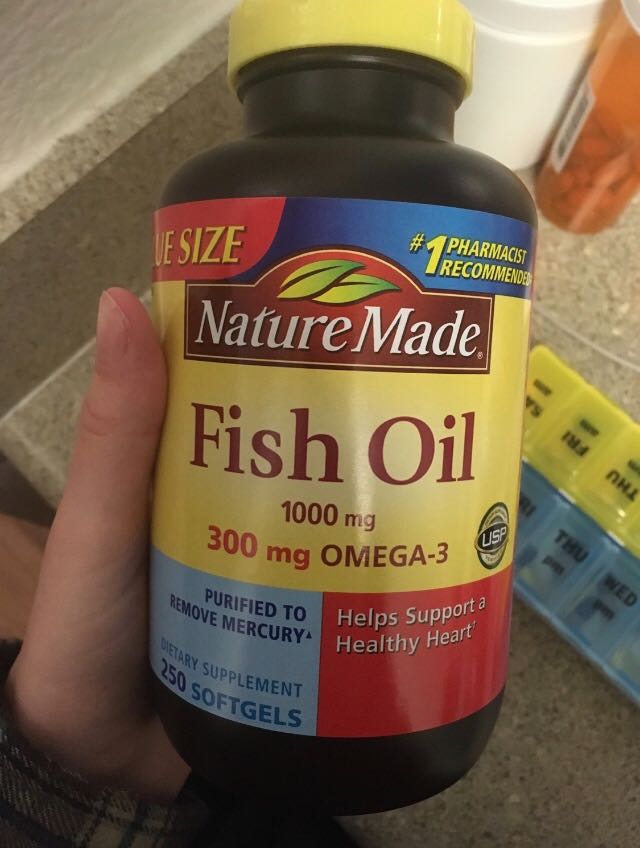
1 Day Before Liver Biopsy: Fasting
I had to stop eating food and drinking water at midnight the night before my procedure. Luckily, I was scheduled for an 8 a.m. arrival time with a 10 a.m. procedure, so it wouldn’t be too many hours without water.
Upon Arrival at the Hospital
The nurse did the typical hospital check-in routine: she took weight and did a pregnancy test. I had also printed my blood test results and gave them to my nurse.
Then, I changed into a hospital gown and they took my blood pressure, heart rate, and temperature. My heart rate was fast (around 113 bpm!) I knew this was because I was extremely nervous and very dehydrated. I get dehydrated super easily because I’m used to drinking lots of water throughout the day.
Then, they hooked me up with sweet, sweet fluids.
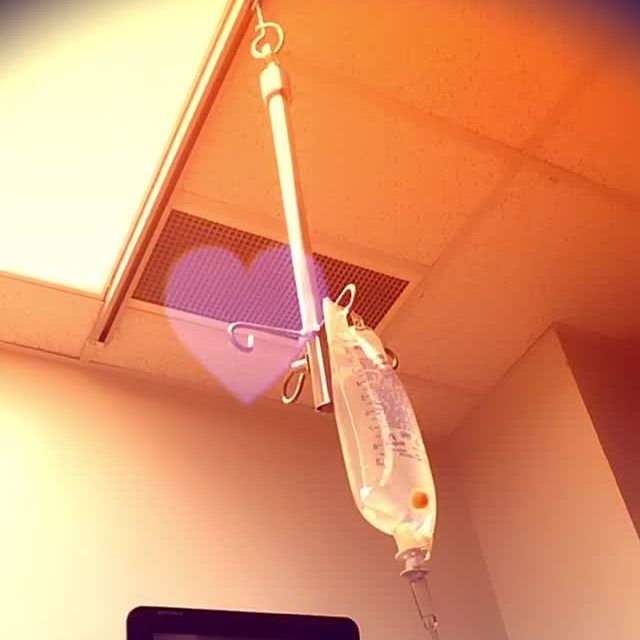
Recovery at the Hospital
Honestly, recovering from a liver biopsy can be a little brutal. Here’s how it went for me.
Immediately After the Procedure: Laying on Right-Hand Side
After my biopsy was complete (click here to read all about the actual procedure) they rolled me back into the recovery room where my husband was waiting for me. I drifted in and out of sleep for the next hour.
For that first hour after the biopsy, it’s imperative to lay on your right-hand side. Your body weight puts pressure on the liver to help prevent internal bleeding.
During that time, the nurse regularly checked on my blood pressure and heart rate every 10 – 20 minutes to check for any signs of internal bleeding: increased heart rate and decreased blood pressure are warning signs.
1 Hour After the Procedure: Sitting Up and Eating
After the first hour passed, and, having shown no signs of internal bleeding, I was cleared to sit up in the bed.
It hurt just to roll over onto my back, and any movement that used my core muscles was painful. I wouldn’t have been able to sit up if the head of my hospital bed couldn’t rise with the press of a button.
And as I sat up…umm ow!! My liver hurt, but what hurt more was my right shoulder! You know when you’re running and you get a cramp in your side? That’s what this felt like, but on the inside of my right shoulder and collarbone. Luckily, that’s normal.
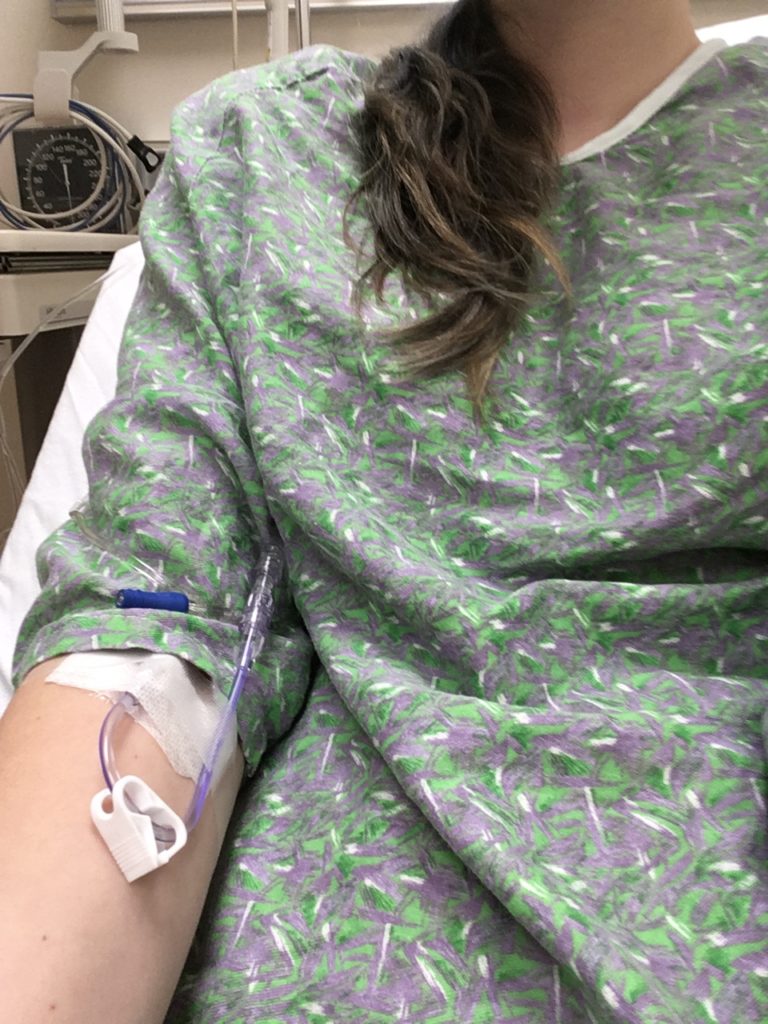
Phrenic Nerve Pain
It’s common for people’s shoulders and collarbones to hurt after a liver biopsy. This happens because the liver sits beside the phrenic nerve, which runs up to your right shoulder; so it’s quite normal for this nerve to become irritated after shoving a needle in that area.
Gahh, hurt to breathe! I could only take short shallow breaths because it was excruciating to try to inhale deeply. After a few minutes of sitting up and letting my body adjust, letting my organs plop back into position, the pain lessened.
They brought me a turkey sandwich, saltine crackers, and graham crackers. It was your typical hospital sandwich: a circular slab of deli meat slapped onto two pieces of plain, microwaved bread. At least there was mustard and mayo. And honestly, after surgery, it really doesn’t taste all that bad.
2 Hours After the Procedure: Hemoglobin Blood Test
After I’d eaten and grown used to the new way I had to breathe for the time being, the nurse checked my hemoglobin. This blood test tells you if there’s any internal bleeding going on.
When the nurse came back into my recovery room, she had bad news. My numbers were too low.
This can happen for two reasons: internal bleeding, or too much IV fluids. And my nurse had been flooding me with fluids since I was so dehydrated that day! She said she was confident the numbers were skewed because of the fluids.
She unhooked the fluids and said she’ll come back in 30 minutes to take my blood again. I had to pee so bad, but I wasn’t allowed to leave the bed until the numbers were stable.
My Second Hemoglobin Blood Test
Like the nurse predicted, the fluids had skewed the numbers, because the second blood test was normal! Finally, I was allowed to get up to walk to the restroom.
I was instructed first to sit up at the edge of the bed for several minutes to gauge the pain and any lightheadedness. The pain was manageable and I wasn’t dizzy, so she let me walk, unassisted, to the nearby bathroom.
Although the restroom was just the next room over, the walk left me winded when I returned. My liver and shoulder were throbbing again, too. Again, this was normal. I did just get stabbed by a giant needle, after all.
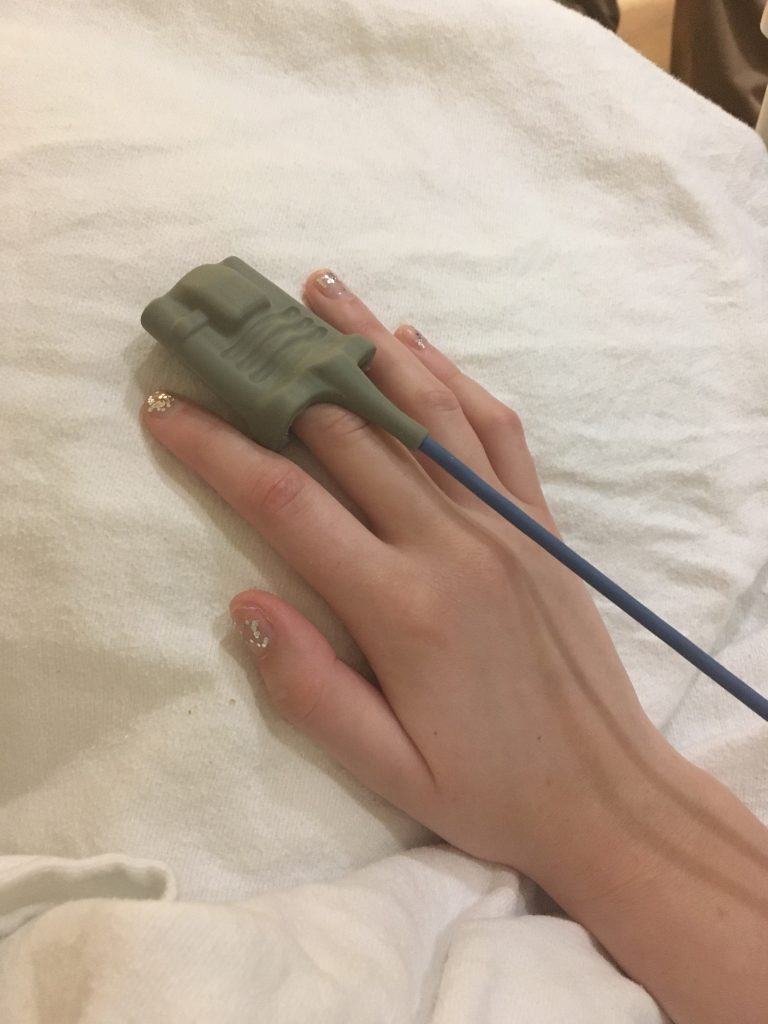
4 Hours After the Procedure: Going Home
Most hospitals require you to stay in the recovery room and be monitored for four hours. At the end of that time, my pain was manageable and there are zero signs of internal bleeding, so I was allowed to leave.
Before my husband left the building to pull the car around, he helped me get dressed since I couldn’t bend over. He guided my feet into my sweatpants and had me sit on the bed as he worked my feet into my socks and shoes. It was so sweet.
My husband accompanied me that day not only for moral support but also because I needed to have a driver since they sedated me for the procedure. Tyler pulled the car around to the front of the hospital as the nurse pushed me in a wheelchair to meet him there.
The nurse opened the passenger door for me because pushing, pulling, or holding anything after this procedure hurt super badly.
Recovery at Home
The painful recovery continued.
Later that Day
We arrived home around 5 p.m. I spent the rest of the evening propped up in bed binge-watching The Man in the High Castle. It felt oh-so-good to relax in my own bed for hours on end.
If I needed pain meds, I was allowed to take Tylenol…nothing else. And, I had to wait two days before taking blood thinners like Advil or Ibuprofen.
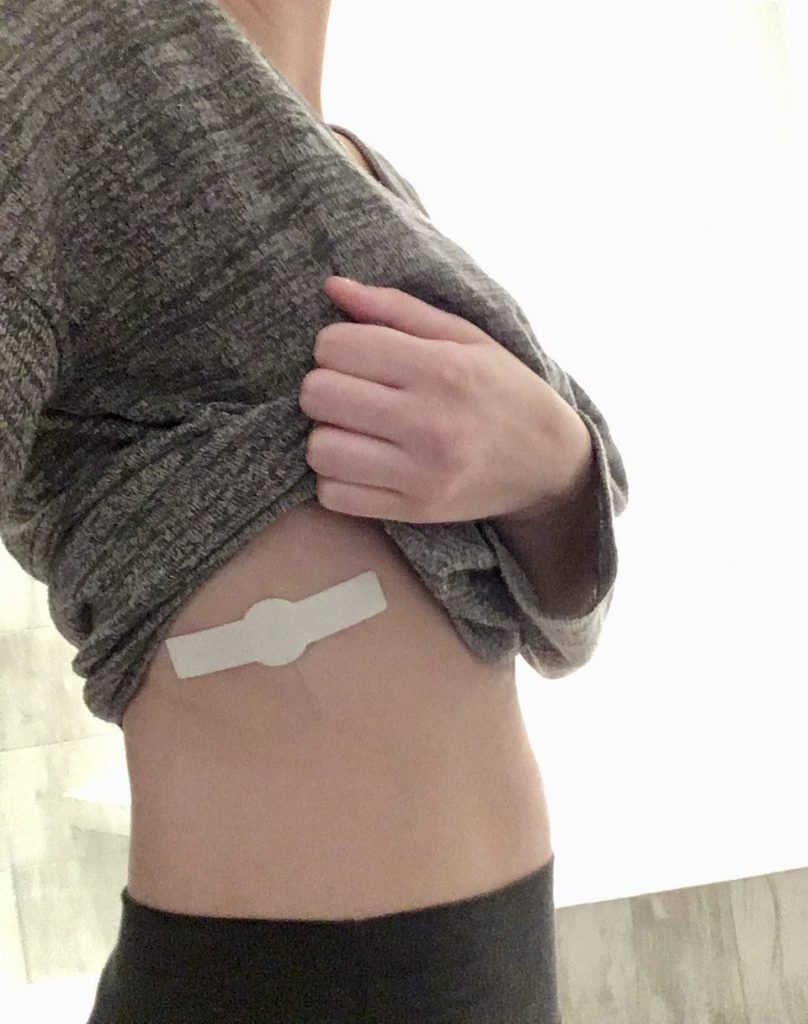
Day One After the Liver Biopsy: Going Back to Work
I was given permission to go back to work the next day. Thankfully, I work from home, so this wasn’t an issue.
But I was still in pain this day, and if I worked a physically demanding job (or even a job in the office) I would have taken the day off; I was still so easily winded and dealing with an uncomfortable liver and throbbing shoulder.
Oh, and laughing sent a searing pain through my side.
Two Days After the Liver Biopsy: Showering
By the second day, I was already feeling stronger and less winded. I could move around a bit more, and instead of my abdomen and shoulder hurting, the pain was more from the local bruising on my skin.
I could now continue taking my fish oil supplements and blood thinners.
Lastly, I could also remove the bandage and shower today! No more sponge baths for me!


Watching for Signs of Bleeding
After the first 24 hours of a liver biopsy, the likelihood of bleeding is drastically lower. However, it’s still important to be on the lookout for signs of internal bleeding or infection. Common signs include:
- Pain and shortness of breath that get worse, not better
- Fever greater than 101° F and chills
- Blood or pus around the wound site
- Redness, tenderness, or swelling at the incision site
Banned Activities
Other than the following, there weren’t any certain activities, food, or sitting/sleeping positions I had to avoid:
- No lifting weights or vigorous exercising for 3 – 7 days
- No lifting anything of 15+ pounds for 3 – 7 days
- Wait 48 hours to remove the sanitary bandage and shower
- No water submersion (baths, hot tubs, swimming) for one week
Recommended Activities
Drinking plenty of water and resting. They recommend taking it easy, and I couldn’t agree more. Never has resting, napping, sitting, and doing nothing felt so healing.
Takeaways from My Experience
Even if your hospital gives you a list of blood thinners to stop taking, specifically ask them about all the meds and supplements you’re on, just to be on the safe side. Ask your hospital if they want you to bring your pre-biopsy blood work results. Know ahead of time the signs of internal bleeding. For me, if I know what warning signs to look for, I feel better prepared.Want to read the other 3 blog posts in this liver biopsy series?
Check them out here:
Part 1: What to Expect at your Ultrasound-Guided Liver Biopsy Procedure
Part 3: 4 Types of Pain You Might Experience After your Liver Biopsy and How to Manage It
Part 4: 3 Major Things a Liver Biopsy Can Tell You (Plus 7 Common Reasons Why People Get the Procedure)
Questions?
Any questions about liver biopsy preparation or recovery? Anything I left out? Please don’t hesitate to reach out in the comments or send me a message.
Please remember: I am not a medical professional. The information in this blog post (and anywhere on my website and its affiliated social media channels) is simply me sharing my story, experience, and research. It does not take the place of medical advice from a licensed medical professional. Read the full medical disclaimer here.
Leave a Reply